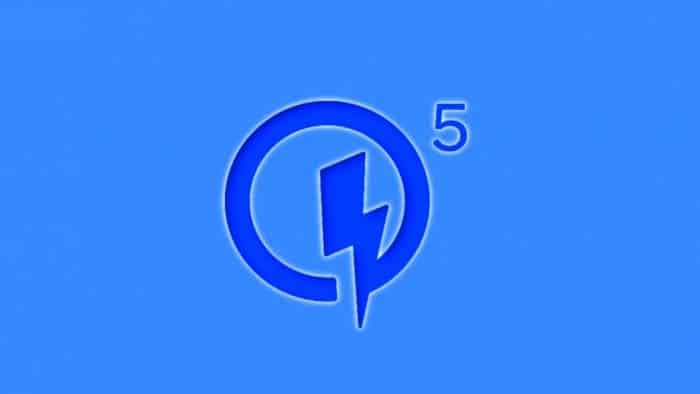Over the past few years, we saw a race to see which company would be the one delivering the fastest charging solution for smartphones. We can say that we reached a point where batteries are pretty satisfactory on most smartphones. To make things even more interesting, there are plenty of modern charging solutions to ensure that a battery will not only last for a long time but that when it dies, you’ll be able to charge it quickly enough. With the introduction of different charging solutions, Qualcomm has lost its place as a fast-charging king. Now, the US-based chip maker wants to reclaim this title with the release of Quick Charge 5.
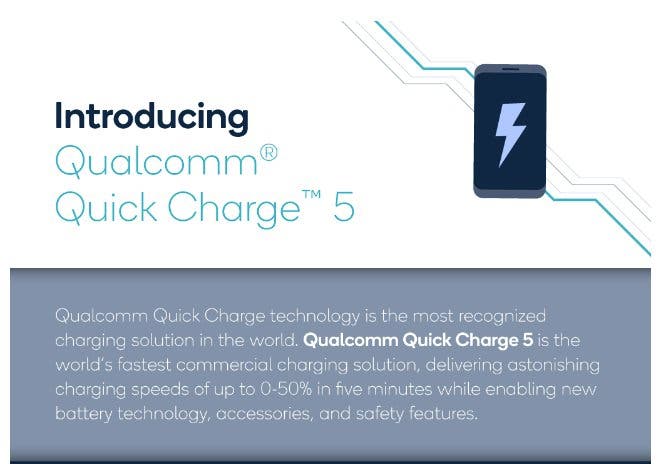
The new Quick Charge 5 is a massive jump if you’re coming from Quick Charge 4. For instance, it supports speeds of 100W and more while keeping the battery 10ºC cooler. Moreover, it is 70% more efficient to boot. According to the company, a 4,500mAh battery can be charged from flat zero to 50% in just 5 minutes. A full charge of such a battery will take 15 minutes. This is in the case of a dual charging solution, which usually splits the battery into two 2,250mAh cells connected in series to increase their voltage. Worth noting that Triple Charge is also supported here.
“Quick Charge 5, our fastest and most versatile charging solution, will enable consumers to enjoy their devices for longer periods of time, without worrying about the time required to recharge. We are proud to expand our technology portfolio and make accessible 100W+ charging a commercial reality,” said Ev Roach, VP Product Management, Qualcomm Technologies, Inc. “We work closely with manufacturers to create industry-leading devices that meet consumers’ demand for more immersive and accessible mobile experiences.”
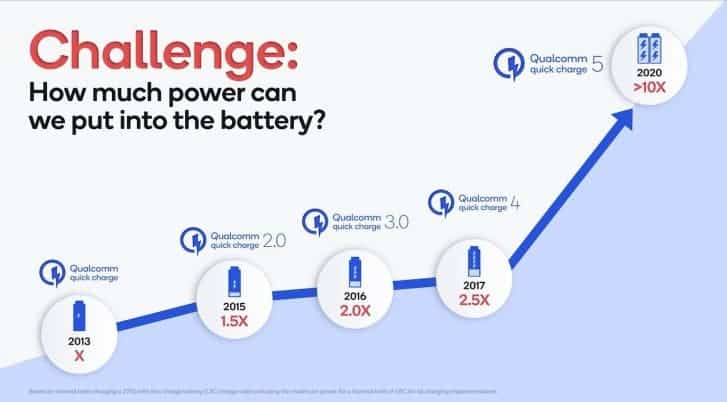
Quick Charge 5 power bricks are required to support output voltages between 3.3 and 20 Volts at minimum. They must have 3.3 or 5A of current or even 5+ Amps. The new charging tech is built on top of USB Power Delivery PPS. However, it also includes backward compatibility with QC2 and later. Moreover, it offers seamless support to standard USB PD devices as well as Apple Gadgets – iPhone 7 and after.
QC5: Faster and Safe
The US chipmaker states that its system offers safety and it’s battery than Power Delivery. The company states that QC 5 comes with 8 levels of voltage protection, 3 levels of thermal protection, 3 timer protection, and 3 levels of current protection. Moreover, it has overvoltage protection at 25V. According to the company, smartphones featuring this new technology will not blindly trust the charger when it announces its PD capabilities. It will always measure the actual characteristics to determine the maximum current the charger can supply. Of course, it will be pretty aware of temperatures and will keep it safe.
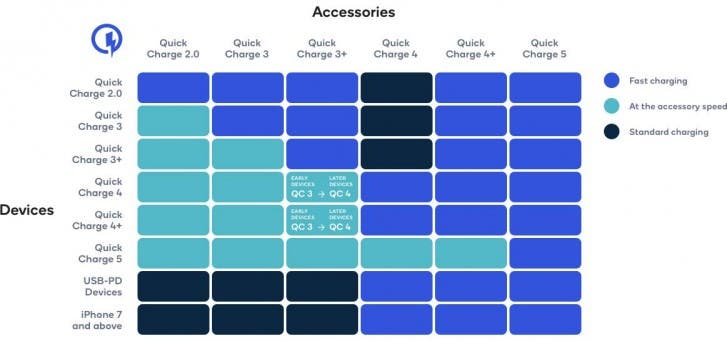
Qualcomm is keen that the first QC 5 smartphones will appear during Q3 2020. The company also revealed two charge controller chips that manufacturers will be able to use – SMB1396 and MSB1398. They offer support for both wired and wireless input and can also be used with 1 cell and 2 cell batteries. Worth noting that 1 cell designs will only support up to 45W charging. This still is a pretty decent amount, and a lot of flagship smartphones are still offering this as a standard.
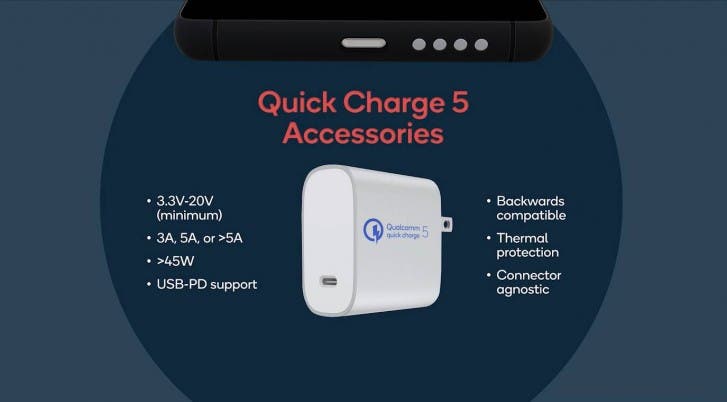
The current Snapdragon 865 and 865+ offer full support for Quick Charge 5 standard. However, we do not expect any of the current smartphones to benefit from this charging techs. Future flagships coming in Q4 or even in 2021 will probably come with the new technology straight out of the box.
Apparently, 100W+ charging will be a standard in the next year. We just hope that this becomes a standard for premium smartphones. Moreover, we expect to see companies offering better (read faster) standards for mid-range and premium mid-range phones.

